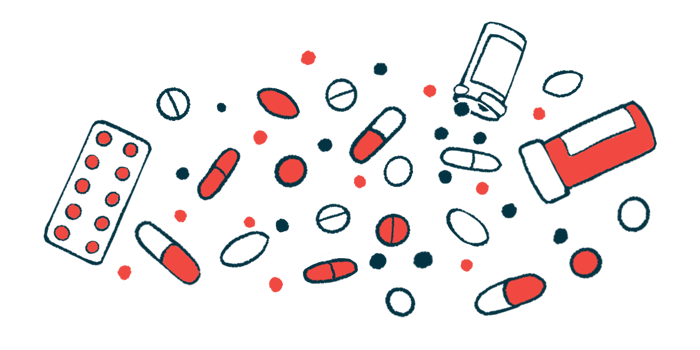Orladeyo May Help Control Attacks in Patients With Normal C1-INH Activity

Orladeyo (berotralstat), an approved therapy for preventing swelling attacks in hereditary angiodema (HAE), was effective at controlling attacks in an HAE patient with normal C1 inhibitor activity, a case study reported.
The clinician said this oral therapy may be particularly suitable for patients who have a needle phobia and, as a result, may refuse treatment with standard injectable medications.
“Here, we report a case … which was difficult to treat because of the patient’s needle phobia, but ultimately responded well to oral [Orladeyo] therapy,” the author wrote.
The report, “A case of normal C1-esterase inhibitor hereditary angioedema successfully treated with berotralstat,” was published in the journal Annals of Allergy, Asthma & Immunology.
HAE is a genetic condition characterized by sudden and recurrent episodes of swelling in the face, hands, feet, upper airways, genitals, and gastrointestinal tract.
The two main disease types — types 1 and 2 — are caused by mutations in the SERPING1 gene, which codes for a protein called C1 inhibitor (C1-INH). When there isn’t enough C1-INH (type 1), or the protein malfunctions (type 2), the levels of a pro-inflammatory protein called bradykinin become abnormally high and cause an attack. These patients often have lower than normal levels of the complement 4 protein, called C4.
However, some patients have another type of HAE, where they experience the typical symptoms of the disease, but have normal levels of C1-INH and C4.
While this form of HAE, known as HAE-nl-C1-INH, can be caused by mutations in various genes, for some patients the genetic cause remains unknown. This makes the diagnosis and treatment of these individuals particularly challenging.
As a result, in cases of suspected HAE-nl-C1-INH, physicians often choose an HAE-specific therapy and observe how patients respond.
In this report, a physician at Spectrum Health Medical Group, in Michigan, described the case of a 60-year-old woman who experienced several episodes of swelling lasting two to four days. Attacks affected mostly her hands, feet, breasts, or abdomen, and occurred two to three times a month.
Before the age of 40, when she underwent a total hysterectomy, the patient experienced severe abdominal pain and swelling during her menstrual cycle, which occasionally affected her genitalia. Of note, a total hysterectomy is a surgery to remove the whole uterus and the cervix.
Similar symptoms were experienced by other women in her family, including her daughter, who was diagnosed with HAE type 1. Disease manifestations in her family and the patient’s own symptoms led to suspicions of an undiagnosed form of HAE.
Lab tests conducted in August 2020 revealed she had normal levels of C1-INH (mean of 21 mg/dL) and C4 (30 mg/dL). C1-INH activity also was within a normal range (90% of the normal activity). All these values remained normal even during two swelling attacks.
“These clinical findings indicated that the patient likely had HAE-nl-C1-INH despite having a family history of HAE-C1-INH (type 1),” the author wrote.
Genetic analysis of the SERPING1 gene detected no mutations, in agreement with a potential HAE-nl-C1-INH diagnosis. The patient declined additional genetic testing due to its costs.
Her medical history revealed that within a variety of medications, including antihistamines, hydroxychloroquine, and steroids, only Ruconest (conestat alfa) — Pharming’s lab-made version of human C1-INH — was able to rapidly (within an hour of administration) resolve two prior swelling attacks.
At first, she was prescribed preventive treatment with Takhzyro (lanadelumab), an antibody-based therapy designed to prevent angioedema attacks, and on-demand treatment with icatibant, the active ingredient in Firazyr, which blocks the activity of bradykinin.
However, the patient refused treatment with either medication since both are given as under-the-skin injections and she had a severe needle phobia.
The woman continued to experience two to three swelling attacks every month. In December 2020, Orladeyo was approved by the U.S. Food and Drug Administration for preventing swelling attacks in people with HAE ages 12 and older. The patient was then prescribed the once-daily oral therapy, marketed by BioCryst Pharmaceuticals.
During the first three weeks on Orladeyo, the patient experienced mild to moderate stomach upset and diarrhea, which resolved with taking the medication with food. At six months of follow-up, her HAE was controlled and she experienced no further attacks.
The patient also felt less anxious, reporting “a noticeable improvement in her anxiety levels,” as the treatment with Orladeyo reassured her she likely wouldn’t require on-demand injectable medications to control her attacks, according to the clinician.
“Based on our findings, [Orladeyo] may benefit other patients with HAE-nl-C1-INH and needle phobia,” the author wrote.








